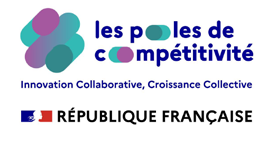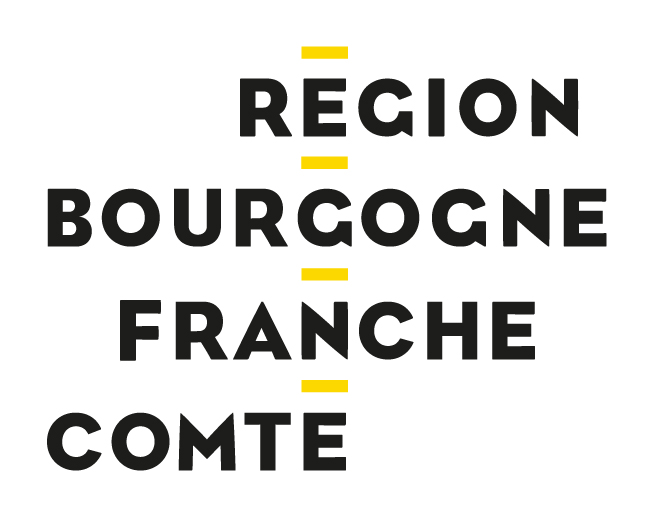15 Sep 2021
Vitawatch: agri-food intelligence round-up for September

Sustainable agriculture, nutrition and health benefits, food formulations and processes, consumer behaviour, food safety... Throughout the world, researchers are working on innovative solutions for tomorrow's food business.
The health benefits of insect protein, ingredient associations for boosting health, the discovery of a natural cyan blue colorant, recycling shrimp by-products for flavouring and nutritional ingredients, the diversity of "senior" consumer profiles, beans adapted to dry climates, cover crops in viticulture to limit herbicide usage and improve water drainage... Read our Vitawatch intelligence round-up for September 2021.
Diet and health
Confirmation of the health benefits of yellow mealworm protein
Insects are established as a valuable source of essential amino acids, oligo-elements and vitamins. Researchers at the University of Maastrict (Netherlands) have been studying yellow mealworm powder in comparison to milk protein from the point of view of digestion, absorption and the stimulation of muscle production. ""We used a unique isotope labeling approach to prove rapid digestion and effective stimulation of muscle protein synthesis following the ingestion of Buffalo mealworm. The observed response did not differ from the ingestion of a similar amount of milk protein," explained Prof. Dr. Luc van Loon, lead researcher.
This research arrives less than two months after EFSA (European Food Safety Authority) issued its authorisation of yellow mealworm powder for human consumption, concluding that this insect-based product provides no danger to human consumption.
Source: The American Journal of Clinical Nutrition
Paired in the right way, ingredients can reveal health benefits
According to a report by the food consultancy Spoonshot IA, food companies are more and more interested in the concept of diet-led immunity. Research in this area reveals that some food pairings can lead to "food synergies" that provide additional functional benefits. For example, tomato with broccoli, chocolate and raspberry, turmeric and pepper, green tea and black pepper, or apple and chocolate. These pairings can provide powerful health benefits such as slowing the growth of cancerous tumours or preventing cardiovascular disease.
"Ingredient combinations that can enhance nutrient bioavailability will emerge alongside the single ingredient focus and pave the way for interesting innovation in the food and business space," details the report. "We are likely to see restaurants partnering with nutritionists to use synergistic ingredient combinations to create dishes that enhance the bioavailability of ingredients, promoting benefits like immunity, gut health, eye health and so on."
Source: Foodnavigator.com
Formulation / process
Researchers discover a natural cyan blue colorant
A University of California team has developed a natural cyan blue food colorant using mono-acylated anthocynanin pigments found in red cabbage. The colorant is very stable over time, can be produced in large quanitities and provides better green colouring than existing natural blue colorants.
While additional testing needs to be carried out, in particular regarding the safety of the compound and to evaluate its stability in a larger range of applications, "this discovery provides a solution to a long-standing food colour need, potentially fulfilling the growing consumer demands for utilisation of more natural ingredients in food while keeping a vibrant colour palette," says Pamela Denish, the research project's scientific lead.
Following successful tests in candy coating, ice cream and frosting, the new colorant will be tested in yoghurts, bakery products and doughs.
Source: Foodnavigator.com
Recycling shrimp byproducts for economically viable flavourings and nutritional ingredients
Traditionally processed as animal feed, or simply discarded, the shells, heads and cooking water of peeled water shrimp could find new outlets in human food.
Scientists at the National Food Institute, Technical University of Denmark, have been exploring economically viable ways to recycle these byproducts that are high in calcium, collagen and aroma compounds. The cooking waters of shrimp will be used to produce a food flavouring, the heads and shells will be used as components to a nutritional supplement, and the collagen can also be integrated in health products. "Further extraction gives a protein / peptide-rich fraction, which may provide techno-functional properties such as stabilisers in emulsions,” says Nina Gringer, project manager.
“The shrimp peeling industry and other value chains will benefit from the project as the shrimp sidestream is more valuable and each process step brings more value to the project,” says Nina Gringer.
Source: Food.dtu.dk
Consumer behaviour
Seniors, a category with varied "eater" profiles
In a study published in Appetite, researchers (mainly from CSGA-INRAE, ESA and Dijon University Hospital) have carried out a mapping of 7 typologies of "senior" consumers (over 65 years old) thanks to a multidisciplinary survey of over 500 older people. This type of study highlights the need to develop preventative and personalised nutritional approaches according to the different profiles, in particular regarding the prevention of elderly malnutrition.
The first three profiles group together seniors under 80 years old, with a good nutritional status, while the last four profiles mainly concern ‘old’ seniors (80+), with an increase in the nutritional risk.
- Profile 1: eat with pleasure and a good appetite, in particular meat products.
- Profile 2: sensitive to the effects of diet on health.
- Profile 3: present signs of depression, food choices governed more by emotions and a reduction in olfactive capacity compared to the two previous profiles.
- Profile 4: active and healthy individuals, with an appetite for meat products and healthy self esteem.
- Profile 5: good appetite while being sensitive to the diet-health connection.
- Profile 6: present eating difficulties (bucco-dental problems, mouth discomfort etc.).
- Profile 7: suffering from loneliness and depressive symptoms.
Source: Appetite
Sustainable agriculture
Scientists develop climate-resilient beans that reduce water usage
Sheffield University’s Institute for Sustainable Food (UK) have developed a variety of bean that requires 40% less water than traditional varieties, making them more resiliant to climate change. ""Modern agriculture uses a lot of water - about 70 per cent of the global fresh water - but this resource is diminishing under climate change, and we desperately need to find new ways to allow farmers to reduce irrigation and still provide enough food for our growing population," says Professor Julie Gray, the project lead.
Similar bean varieties could in particular allow farmers in Latin America to be less vulnerable to crop loss due to unseasonal droughts, and thus reduce reliance on food imports.
Source: www.sheffield.ac.uk
Viticulture: protecting water and soils with rye, clover and oat cover crops
In the Champagne region of France, a group of 25 viticulturists have been experimenting for 10 years with winter plant cover between rows of grapevines. This practice structures and enriches the soil, reduces reliance on herbicides and mechanical weeding, as well as optimising water circulation.
The plants chosen for the cover crops are adapted to the needs of vine cultivation. They are "not too high, in order to make winter pruning easy, but also sufficiently cover the soil to be resistant to being walked on by the grower. Successfully growing cover crops over time makes viticulture more sustainable, more economical, in particular regarding mechanisation, and more socially acceptable by finding alternatives to chemicals," explains Jérôme Courgey, viticulturalist and coordinator of the Champagne Cover Crop and Green Manure working group.
The best results were obtained from clover, for its nitrogen-fixing ability, faba beans, for their deep tap root that breaks up soil and encourages deeper water penetration, and oats or rye as protective mulch against climatic extremes.
"Through both physical and chemical actions on the soil, green cover crops free up minerals essential for the development of grapes (calcium, magnesium, potassium and iron). The first results of tests show that the bunches of grapes are maturing evenly, which is a very important criteria for producing high quality wine, and represents a real improvement that encourages us to continue," explains Jérôme Courgey.
Source: Agriculture.gouv.fr




 Home
Home
















Share your opinion